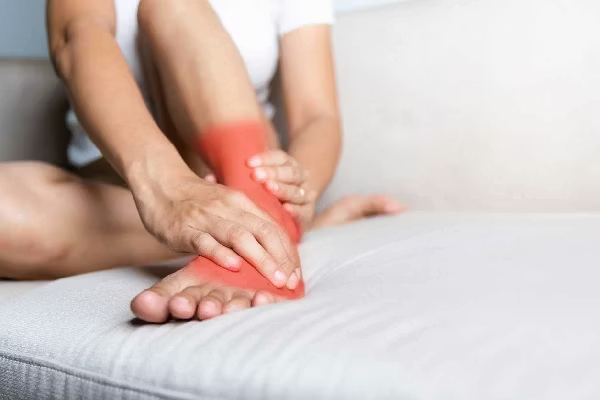Pain has an annoying way on creeping up on you. And, if you're not careful, in time it can take over your life. Like a houseguest who loves your hospitality a bit too much, once pain arrives, it can be a challenge to get it to pack up and leave.
Learn more: Is Your Everyday Life Setting You Up for Pain?
Thankfully, there are things you can do to prevent pain from moving into your body and settling down into your sacred space, draining you of time and energy. Practice some prevention and close the door on pain with these strategies.
Incorporate massage into your daily routine.
What? You don't have your personal on-call masseuse available 24/7? Oh, wait—you do. The hand-held Wahl deep-tissue massager can be conveniently picked up any time you need relief from tight muscles or pain caused by stress or overuse. And now is the perfect time to heed this advice, as stress and muscle pain are prevalent this time of year. All the extra running around during the holidays can take a toll on your body. Luckily, massage improves blood circulation, working below the surface to keep your body flexible, active and relaxed. It also goes a long way toward relieving fatigue and preventing any old injuries from taking you down, too.
Reduce your likelihood of workout injuries. First and foremost, pick the right exercise program. Being honest with yourself on what you can and cannot do can keep you from jumping into the wrong type of exercise for your body and fitness level. Once you choose your program, start slowly, even though it might be tempting to push yourself. (There will be plenty of time to ramp up your intensity, duration and frequency.) Whatever it is you choose to do, make sure to vary your workout with cross-training, which will prevent you from using the same muscles day after day and lessen the risk of injuring them. Always warm up before you begin; that can mean jumping rope, riding an exercise bike or jogging in place for five minutes.
Prevent muscle soreness after your workout. If you missed the memo to ease into your routine (see above) and end up with soreness after your workout, it's not too late to treat it before it morphs into pure pain. Soreness can set in when you try something new at the gym or you've pushed yourself a bit too hard. Just as you need to warm up, you need to cool down, too. You may be tempted to throw in your towel and head to the smoothie bar, but before you do, treat your muscles to some gentle stretching (and maybe even bring along your Wahl deep-tissue massager)—it can keep you from paying the price of sore muscles after you walk out the door.
Keep your weight under control. The benefits of losing weight go way beyond just looking good. Because the joints in your body bear the stress of carrying your weight around, losing weight will lighten that load and reduce strain on your joints, particularly those in your lower body, like your hips and knees. Some studies find that for each pound you lose, you'll reduce about four pounds of extra pressure on your knees! And new research finds that losing weight can do more than just reduce joint pain. A University of Michigan study found that losing about 10 percent of your body weight can help reduce pain in other areas of the body like the muscles, stomach, chest and jaw.
Stretch every morning. When your body is resting, your circulation decreases and so does the movement of synovial fluid (which lubricates your joints). Stretching, before you launch into your day, should be part of your routine, whether your work out or not. It can help make arthritic joints more flexible, loosen up tight muscles, increase your range of motion, improve your balance and prevent falls. Even if it's a quick routine, stretching goes a long way toward fending off stiffness, back pain, sore knees and neck and shoulder pain. Read more about Why Your Body Needs to S-T-R-E-T-C-H.
Wear the right shoes. Wearing the wrong shoes can set you up for a vicious cycle. Those high heels, pointy toes and sandals without much support stress your ankles, toes and heels, making you less mobile and, as a result, less likely to exercise. Studies prove it: One found that perpetual high heel-wearers suffered from shorter strides, permanently flexed toes and shortened calf muscles, leaving them more vulnerable to pain. Another from the University of Alabama at Birmingham found that wearing high heels not only hurts, but that injuries from wearing them doubled between 2002 and 2012. They may make you look stylish and sexy, but you won't feel that way if pain prevents you from walking the walk.
This post originally appeared on mysocalledmidlife.net.


 What? You don't have your personal on-call masseuse available 24/7? Oh, wait—you do. The hand-held
What? You don't have your personal on-call masseuse available 24/7? Oh, wait—you do. The hand-held 




